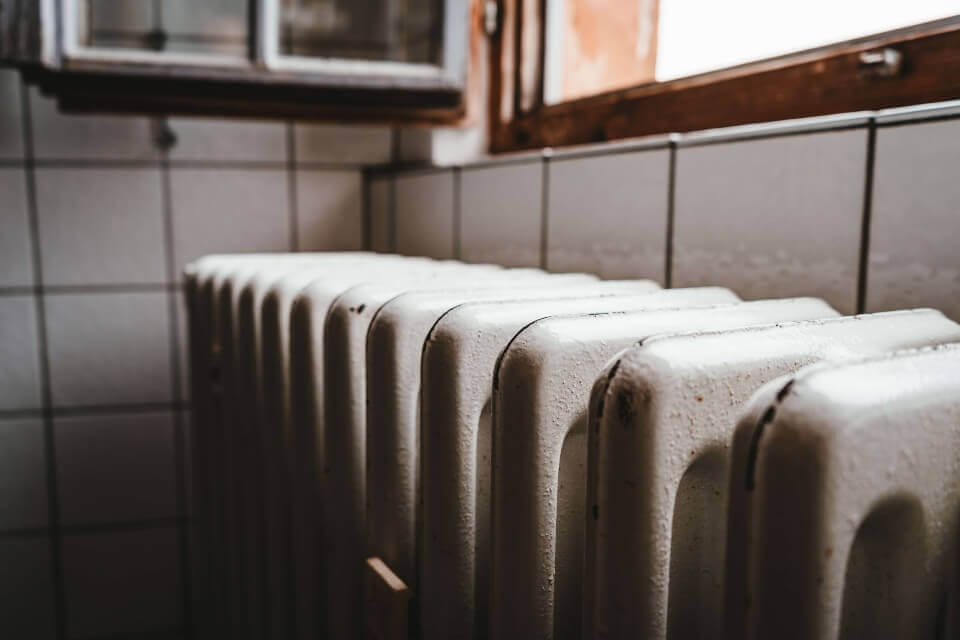
Today, the experts at PlumbHub - the home of your plumbing and heating needs - will guide you through the process of bleeding radiators.
First, we should establish why bleeding radiators is important, and should be done from time to time. Simply put, throught the lifespan of your central heating, air can slowly begin to accumulate within the system, leading to an overall lack of heating efficiency and, subsequently, higher utility bills.
As complicated as it may initially seem, do not worry, as bleeding a radiator is not a task that requires a surgical level of expertise: it is a simple, step-by-step process.
Following PlumbHub's guide will empower you to take control of your energy usage and monthly utility bills.
When to Bleed a Radiator
Several situations will indicate that it is time to bleed a radiator, they are:
Rattling Radiators
When your central heating system contains trapped air, radiators will often make peculiar audible sounds such as rattles and gurgling: typically informing you that it is time to bleed the radiator. Though such noises can be caused by several factors, the first troubleshooting exercise would be to bleed the radiator.
The Radiator is Cold at the Top
When air collects at the top of a radiator, it will often mean that the upper portion is unable to retain an adequate amount of heat as the hot water is prevented from circulating thoroughly. To regain the heating efficiency of your radiator, any built-up air needs to be released.
This is the most common reason for bleeding a radiator.
Radiator Completely Cold
Such an occurrence will usually mean that there is air trapped somewhere in the pipes, restricting the hot water intended to be transferred to the radiator to heat it up. Often a sign of larger problems with your central heating system – particularly if not treated quickly – it is advisable to not ignore a radiator that refuses to heat up, and firstly attempt to bleed the radiators to elimate the prospect of simpler, easy-to-fix causes.
Mould and/or Damp Around Your Home
Should your home have areas that contain mould developing on the walls, or unsightly damp patches, it may be time to intervene and bleed the radiators close to the location.

Bleeding a Radiator – What Do I Need?
There isn’t an extensive list of tools required to bleed a radiator, all that is required:
- Safety Gloves (as the water inside of a radiator can be extremely hot)
- Radiator Bleed Key/Rear Access Bleed Key
- Cloth or Rag of Reasonable Thickness
- Bucket/Draining Container
- Floor Protection
Bleeding Radiators – Seven Simple Steps
By following our easy-to-follow guide, bleeding your radiator will no longer be daunting.
- Turn on the central heating and wait for every radiator to warm up to their maximum level
- Locate the radiators that require bleeding by determining whether each has an even level of heat from top to bottom. Should there be an uneven distribution of heat – typically cold at the top – it is a sign that the radiator/s require bleeding
- Switch off your heating, and wait for your radiators to cool before you begin the bleeding process to not get burnt
- Using the cloth, place it just below the bleed valve to catch any water droplets that may escape. To locate the radiator bleed valve, look towards the top corner of the radiator.
- Open the radiator bleed valve and release the trapped air, which will emit a slight hissing sound. If no water or air escapes during the radiator bleeding process, it will typically mean that the valve is blocked by paint
- Close the radiator bleeding valve when there are no longer any audible hissing sounds and water begins to sprout (meaning any trapped air has now been released): use the radiator key to close the valve by turning clockwise. Repeat steps 4 to 6 for every radiator you suspect needs bleeding
- Check on your boiler pressure by looking at the boiler water pressure gauge. Should your water pressure be between 1 and 2 bars – a normal level – you are free to switch your heating back on. However, if your boiler pressure is below 1 bar, it will mean that the system needs to be repressurised.
PlumbHub’s Hub of Knowledge

How can I tell if the radiator bleeding process has worked?
Once the radiator bleeding process has been completed and the central heating has been turned back on, your radiators should heat up evenly. It is advisable to check the pressure gauge on your boiler to ensure that it is levelled at between 1 and 2 bars.
Is it possible to bleed a radiator whilst the heating is still on?
Under no circumstances should you attempt to bleed a radiator whilst the heating is still active. Not only could hot water injure yourself or another party, but it will also just mean more air enters your central heating system as the pump works to heat your home.
How often should a radiator be bled?
It is advisable to conduct a thorough check of all of your radiators once every few months, particularly as the colder weather begins to set in: primarily to ensure that your home is heated efficiently for your comfort and to keep the cost of your energy bills down. Should you need to bleed your radiators periodically, please refer to this guide as many times as necessary.
Should you require more information or quotes on bespoke radiators, kitchen fittings, bathroom furniture, shower trays or other plumbing components, please feel free to contact the experts at Plumbhub.

